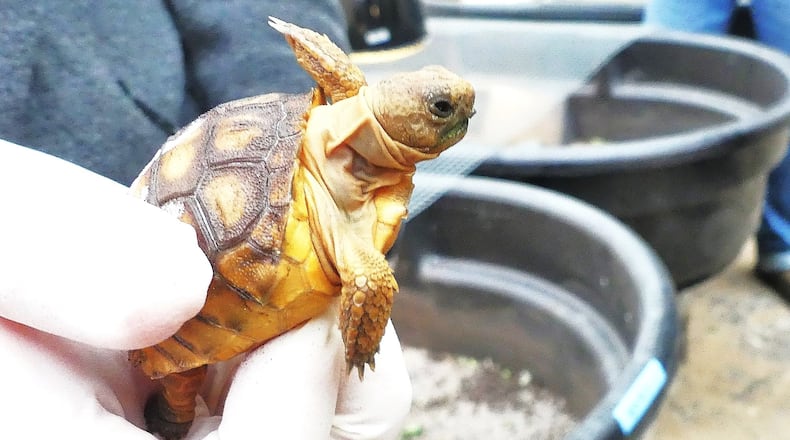The gopher tortoise, Georgia’s official state reptile, is North America’s largest land turtle and the Southeast’s only native tortoise. It digs its deep burrows in the sandy soil of its natural habitat — open, grassy upland forests, which once covered huge swaths of the Southeast’s coastal plain.
More than 250 other species — including frogs, lizards, snakes, mice, skunks, foxes, beetles — also may use the burrows for shelter and nesting.
Thus, the gopher tortoise is called a keystone species because so many other animals rely on it.
The tortoise itself, however, is in serious decline. Habitat destruction from development, logging, agriculture and other problems has greatly reduced its populations. It is on the federal Endangered Species List in its western range (Mississippi, Louisiana, western Alabama) and is a candidate for federal listing in its eastern range, including Georgia.
Wildlife biologists hope to avoid the need for the more stringent protection in the eastern range by helping landowners adopt voluntary conservation methods. Some 80 percent of gopher tortoise habitat is in private or corporate ownership.
To learn about some of those methods, I recently visited the University of Georgia’s Savannah River Ecology Lab near Aiken, S.C. One method pioneered by SREL involves removing tortoises from areas where their habitat is threatened by development and then “translocating” them to protected preserves — and then helping them overcome their strong instinct to try to crawl back to their old homes.
SREL researchers also have begun retrieving tortoise eggs from burrows, hatching them in incubators, rearing the hatchlings in special pens until they are a certain size, and then releasing them into the wild — another effort to enhance the animals’ survival chances.
IN THE SKY: The Quadrantid meteor shower, visible all next week, will reach a peak of about 50 meteors per hour on Wednesday and Thursday nights — in the north after dark until dawn, said David Dundee, Tellus Science Museum astronomer.
The moon will be full on Monday. Some native Americans called it the “Wolf Moon” because it was when hungry wolves howled outside villages. Mercury, Mars, Jupiter and Saturn are all low in the east just before sunrise.
About the Author
Keep Reading
The Latest
Featured


